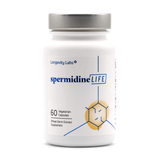
With age comes sarcopenia or age-related muscle loss. Sarcopenia usually begins about the age of 50, but can happen more rapidly once you approach the age of 75. Though it is the natural order of life, it is possible to slow its progression or even reverse it. However, it will take intentional planning and action on your part to do so.
How Does Aging Affect Muscular Strength And Size?
As we age we lose both muscle mass and muscle strength. The greatest muscle mass occurs between the ages of 20 years and 30 years. Muscle strength is directly related to muscle mass. Very little (3-5%) of muscle mass is lost per decade between the ages of 30 years and 50 years. After 50 years of life there can be as much as 15% loss of muscle mass each decade.
There are several factors that have negative effects on our muscles as we age. Anabolic changes lead to an increase in muscle mass. Catabolic changes lead to a net loss in total body mass including both muscle and body fat. Health issues that are a result of aging also lead to loss in muscle size and strength. We often substantially reduce our physical activity as we age. Muscles not used atrophy resulting in loss of muscle size and strength.
Muscle mass and strength are not the only losses associated with age. Skeletal muscle power has been shown to decline earlier than muscle mass and strength. Muscle power is the force and velocity of a muscle contraction.
What Is Muscle Mass And How Does It Affect You As You Age?
Muscle mass is the combined weight of smooth muscles, skeletal muscles and the water contained within the muscles. Smooth muscles are involuntary muscles which operate internal organs, blood vessels, digestive and reproductive systems. You cannot control involuntary muscles. Skeletal muscles are voluntary muscles you can control. Voluntary muscles are connected to bones. They are muscles you control. All muscles contain water.
The greater your muscle mass, the more effectively the body burns calories and fat when you are in motion. Healthy muscle mass is therefore tied to a healthy body weight.
Sarcopenia Causes Loss of Muscle Mass
Sarcopenia, the age-related involuntary loss of muscle mass, strength and function unfortunately occurs naturally in the aging process. Studies seem to indicate that sarcopenia takes place at the cellular level. As muscle mass is lost it is replaced by body fat which often leads to increased insulin resistance in the elderly.
This can be a factor in age-related and weight related diabetes. Reduced muscle mass and strength reduces mobility and may lead to balance issues and falls in the elderly. All of these are major factors leading to disability and loss of independence as aging occurs.
What Causes Muscles To Tighten With Age?
An indicator that muscle mass and strength are being lost is muscle stiffness. As we age fluid tends to accumulate in the feet, legs, hips and lower back. Muscles pump fluid when we are in motion. As we age, our muscles are not being used as much nor are they as efficient. Those fluids contain substantial connective tissue cells which when not used begin sticking the leg muscles together. This leaves our muscles in their pattern of non-use resulting in muscle stiffness.
Tightness in the muscles leads to stiffness, which leads to discomfort, which leads to less activity, which leads to increased stiffness. Increased movement including stretching of the muscles moves the fluid keeping it from settling. You can effectively decrease stiffness by moving and stretching the muscles.
How Do You Stop Muscle Loss As You Age?
Loss of muscle size and strength are inevitable as we age. But it is possible to slow the process and the progress. It is even possible with intentional change in lifestyle to reverse some of the muscle loss.
Contributors to sarcopenia, age-related loss of muscle mass, are:
- Reduced or loss of mobility
- Dietary changes that decrease calories and protein
- Inflammation or inflammatory diseases
- Severe emotional and/or physical stress
- Reduction of anabolic hormones
Two primary indicators that you are losing muscle mass are increased tiredness and unexplained weight loss. Since these are also symptoms of other serious diseases you should talk with your doctor if you are experiencing them.
Obviously intentionally combatting or avoiding the contributors to muscle mass loss is a goal as you age.
Exercise
You should initiate or increase strength and endurance exercises such as walking, biking and swimming. Include resistance training with weights or resistance exercise bands.
Diet
Evaluate your diet for healthy calories and proteins.
Inflammation
Identify causes of inflammation in the body and seek ways to reduce it. Identify ways to reduce physical and emotional stress. Consider meditation exercise to deal with several of the negative factors contributing to loss of muscle mass.
At What Age Does Muscle Growth Stop?
Muscles develop until the age of 25-30. Healthy muscle mass continues until about the age of 40. Sarcopenia, age-related loss of muscle mass, begins at that age and accelerates at the age of 50. Left to run its course, muscle loss after the age of 50 will lead to increased weakness and reduced mobility. The result can often lead to instability resulting in reduced activity due to fear of falling. A fall can result in a fracture requiring prolonged recuperation and extensive therapy.
While sarcopenia is the natural course it’s progression can be slowed. Intentional strategies can even reverse muscle loss that occurs after 50.
Much of the problem occurs on a cellular level. Hormonal changes are one of the factors at play in muscle mass loss after 50. Growth hormone, testosterone and estrogen are anabolic hormones. Testosterone levels decrease in men around the age of 50.
Supplements Can Help
If you are involved in resistance training you might want to consider a protein supplement. The recommendation is that 1-1.3 grams of protein for each kilogram of body weight is needed by older adults participating in resistance training.
Since all development in our bodies and body systems can be reduced to the cellular level it stands to reason that sarcopenia, or age-related loss of muscle mass, could be impacted by muscle cell renewal. As you plot your course toward renewal of muscle mass consider incorporating spermidine into your regimen.
Spermidine stimulates autophagy which is the body’s cell renewal process. Autophagy is the process by which the unnecessary and dysfunctional elements in the cell are removed or renewed. This makes room for regenerated and new cells.







